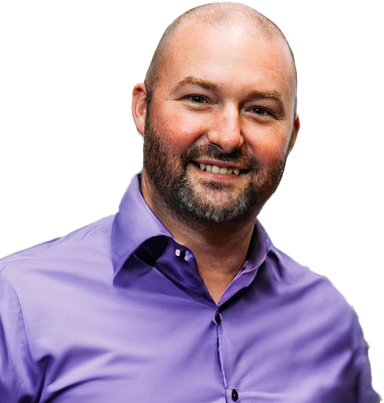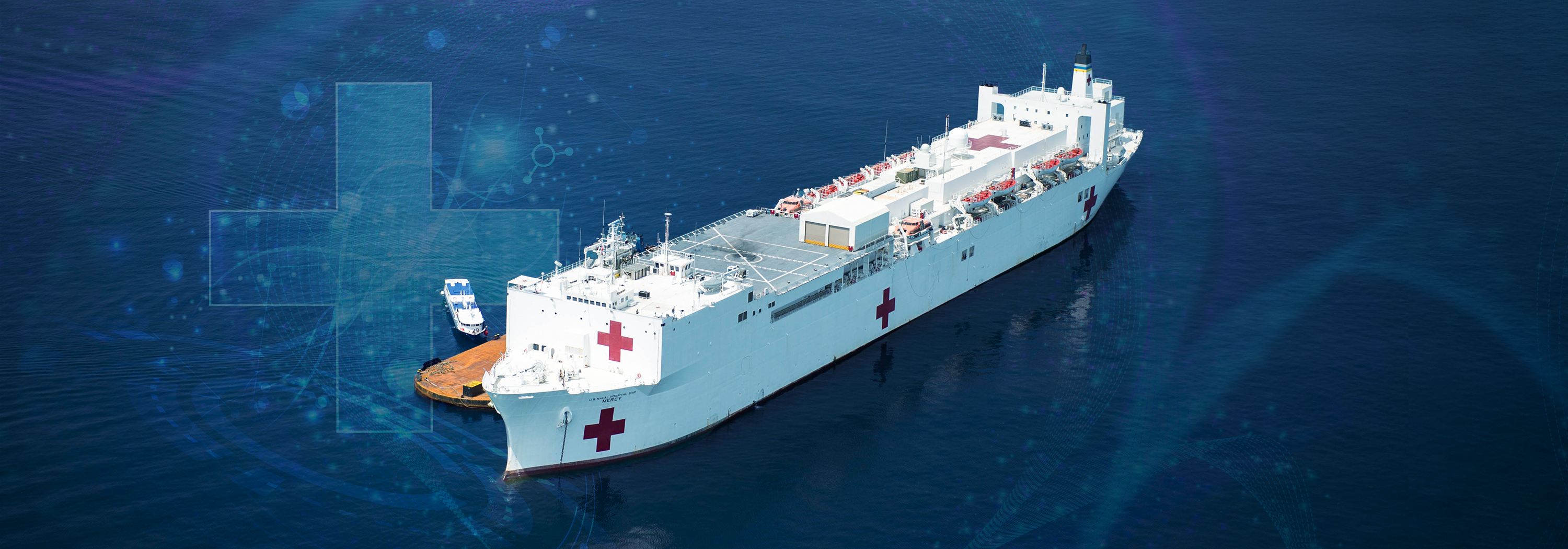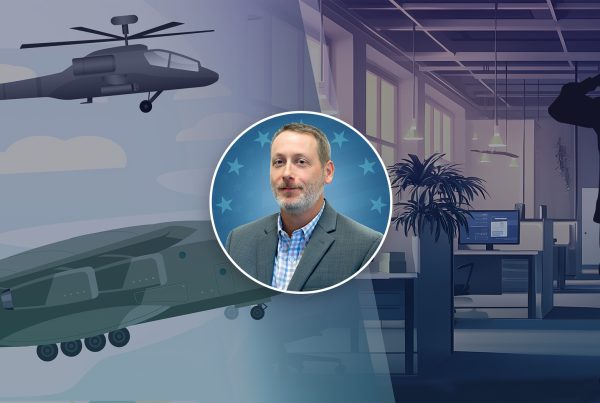Mike Taylor still gets a little choked up remembering the taxi driver he met in 2015 in the Philippines. While driving Mike to the pier where the U.S. Naval Ship Mercy was docked, the driver explained that Navy surgeons aboard the ship had just repaired his niece’s cleft palate. From the taxi’s back seat, Mike could see the man’s beaming smile in the rearview mirror.
“In the Philippines, kids don’t normally get care for a cleft palate,” Mike explains. “They’re often rejected by their families and unlikely to marry. But one of our surgeons, in about an hour, had repaired that girl’s palate and probably changed her life. I’m just an IT guy, but maybe my work contributed to some small part of that.”
Welcome to the world’s largest hospital ship and the workplace of ECSer Mike Taylor.

MIKE TAYLOR
HOSPITAL SHIP JOINT TASK DIRECTOR
Q: We last checked in with you in 2021. Since that time, what have you and the ECS team been up to aboard the USNS Mercy?
A: We still manage IT engineering and cybersecurity. We also handle healthcare logistics, which means keeping the ship stocked with bandages, scalpels, needles, and other supplies.
Right now, we’re transitioning to hyperconverged* technology. Every resource on a ship is finite, so we’re always looking for ways to use less power, have a smaller environmental impact, and take up less rack space. Hyperconvergence will help us do that.
We do routine things like firewall upgrades, and we’re always working to meet several sets of standards. We perform all the cyber operations that corporations perform, plus those the military requires, plus those that hospitals perform.
I personally spend my time on funding and working with vendors to replace equipment. I work with staff on ship to schedule updates and upgrades in ways that won’t hinder the Mercy’s readiness. It’s the crazy dance CIOs and IT directors sign up for. But pulling it off and watching these ships do their good work is beyond worth the effort.
*Hyperconvergence uses virtualized computing, software-defined storage, and virtual networks to combine storage, computing, and networking into a single system.
Q: What special challenges do IT pros face aboard a Navy hospital ship?
A: Cybersecurity is a special challenge. When we go to foreign ports, we can have thousands of foreign nationals coming aboard ― not just patients, but also tourists and medical experts. There’s plenty of opportunity for bad actors to put USB devices into PCs, take pictures, or slip into restricted areas. The attack vectors are insane. We put the utmost care and concern into all things cyber.
Secondly, nobody on a ship has an out. When you’re underway in the middle of the Pacific Ocean and your satellite communication is down, there’s no reaching out to a friend, and there’s no Google. You either know what you’re doing or you don’t.
Finally, power onboard is unpredictable. It can fry hardware, so backup measures are vital. You need replacement hardware for everything.
“When you’re underway in the middle of the Pacific Ocean and your satellite communication is down, there’s no reaching out to a friend, and there’s no Google. You either know what you’re doing or you don’t.”
– MIKE TAYLOR
Q: What makes ECS the right company to handle health IT at sea for the Navy?
A: Our deep focus on cyber, for one thing. We’re at the forefront of cybersecurity, and that bleeds into the way we implement all IT systems on ship. And we’re winning. We’re preventing bad actors from making trouble on the Mercy.
The well of skills the team can draw from at ECS is super deep. We have people in all the IT disciplines, and the team can tap into that well and do magical things.
ECS is also intimate with the nuances of expeditionary medicine. Several of us on the Mercy are former military. We deploy with the military guys. We understand the almost religious nature of the mission, and we’re dedicated to it.
Finally, ECS leadership provides the necessary support. Everybody at ECS, all the way up to the CIO’s office, is interested in the ship’s mission and eager to back it. To have that support, especially when we go downrange on a six-month humanitarian mission — you can’t put a price on that.
Q: For years, you’ve been working in an intense and challenging setting. What keeps you there?
A: The Mercy is an extension of the wonderful gift of talent the United States has and a way for us to project our humanitarian might forward. If, God forbid, war breaks out, the Mercy will support the Navy and other forces.
I have the chance to help make sure the Navy can do these things for others and bring home the stories and good news. Even after combat, they might be able to say they had hundreds of wounded sailors, soldiers, airmen, and Marines on ship and they saved them all.
Having the ability to help make this happen is very gratifying. It gives you a feeling of purpose, a feeling that the things you’re doing are meaningful.






